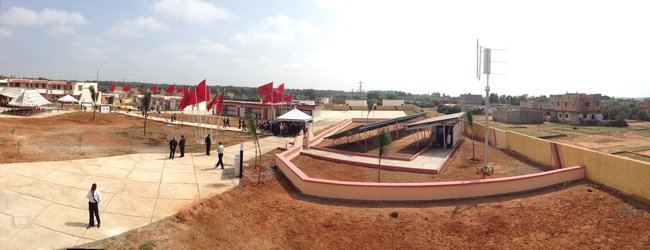

Running water
The Moroccan Minister for Higher Education and Scientific Research, Lahcen Daoudi, at the opening ceremony of a water treatment facility using sustainable power and space technology at the University of Kenitra in Morocco, 17 April 2014.
ESA has been working for over 20 years on the best recipe for a closed life-support system that processes waste and delivers fresh oxygen, food and water to astronauts. One of the discoveries is how to build and control organic and ceramic membranes with holes just one ten-thousandth of a millimetre across – 700 times thinner than a strand of human hair. These tiny pores can filter out unwanted compounds in water, in particular nitrate.
Building on ESA’s experience with membranes, French company Firmus teamed up with Germany’s Belectric to build a self-sustaining unit powered by solar panels and wind energy.
The pilot model in Morocco will cater for 1200 students. Surplus energy and water generated during school holidays will be shared with locals.
If the membrane approach works well, the unit will be scaled up by a factor of ten to deliver water to the rest of the local population.





